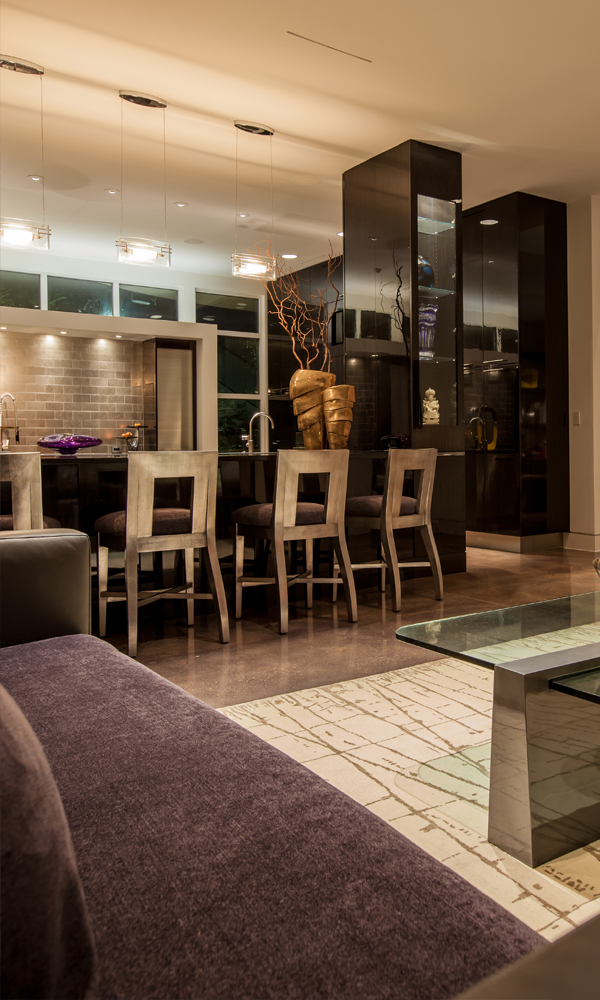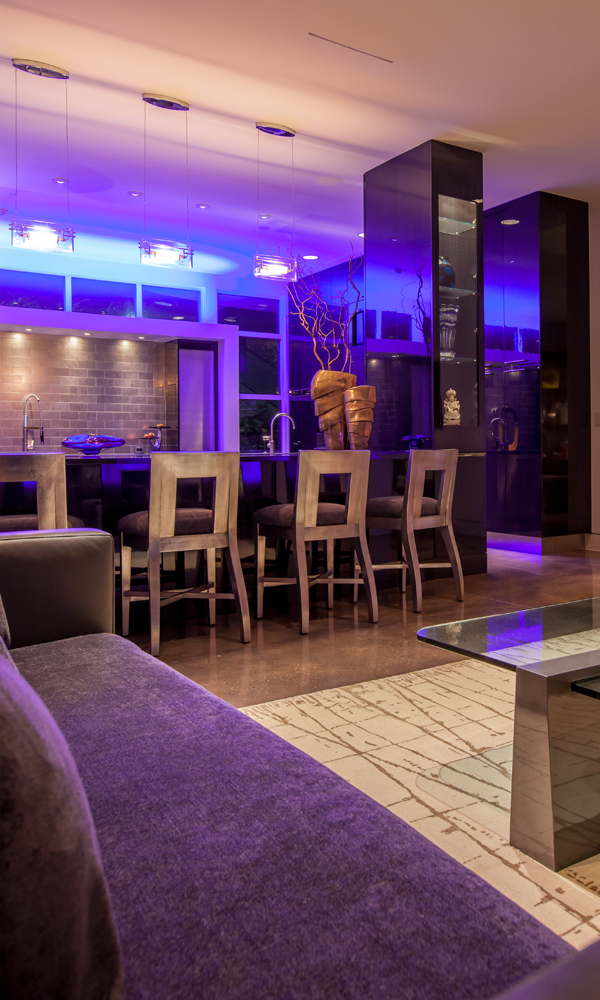It is an often overlooked room when it comes to making home remodeling plans, but a well designed and well functioning laundry room can make a big difference in the home. Just think of how much more enjoyable and easier it will be to get laundry done in a room that works for your specific needs and that you enjoy going into. Keep reading to take a look at a few of the laundry room remodels we have completed over the years and get inspired for your own laundry room remodel.
This laundry room is on the smaller side but it is full of style and function. The stackable washer and dryer units help make the most of the available space. Prior to the remodel the room did have side by side units, but due to the larger size of modern models the stackable units made the most sense. It also helped to free up a little extra space in the room for storage. One of the highlights of the room is the ample storage and countertop workspace opposite the washer and dryer. A large apron sink makes it easy to spot clean or hand wash. The room features several high end design elements including marble countertops, marble subway backsplash tile, and custom designed cabinetry that matches cabinetry in the nearby kitchen. All in all, this laundry room makes up for its smaller size with plenty of added conveniences and luxurious style.
With plenty of cabinet and countertop space this laundry room provides ample working space. We especially love the color coordination of the room. The cabinets and walls are a matching color which allows the white of the countertops and the appliances to stand out. Furthermore, matching the color of the cabinets to the color of the walls helps the cabinets to blend in and not feel overwhelming in the room. It almost always seems like laundry rooms run on the smaller side, especially with how much space gets taken up by appliances and cabinets, so finding ways to make the room appear larger is a definite plus. Finally, the built in hanging rod provides the perfect place for clothing to air dry or to hang up freshly cleaned clothes before transporting them back to closets.
When you dream about your perfect laundry room we wouldn’t surprised if this spacious and well equipped room came to mind. Overflowing with both function and style, this laundry room is truly one of a kind. Ample cabinet and countertop space provides plenty of room to work and store essential items. The room includes built in drying racks, undershelf lighting, a built in hanging rod, and a mobile cabinet cart to help make the chore of doing laundry so much easier. The black and white color scheme gives the room a clean and fresh look. We especially love the unique floor and wall tile that gives the room so much personality. Also included in the room but not pictured is an undercounter beverage fridge to serve the adjacent family room or provide a much needed refreshing drink when you’re dealing with a mountain of laundry.
The history of this laundry room is as impressive as the final results of the remodel. Located in an historically registered home, part of the space that the remodeled laundry room occupies was originally a small restroom for the mailman to use as he completed his delivery route (back in the day when all mail was delivered on foot and not by truck). A previous remodel had converted part of the space into a laundry room but the homeowners wanted to make the room larger so additional space from a pantry closet was added to the laundry room. The room features a plethora of storage options throughout the many custom built cabinets that fill the room. In addition to the plentiful storage, there is also a decently sized cabinet section with a countertop that is perfect for sorting and folding laundry. The room hearkens back to the home’s historical status by using elements of traditional design and vintage looking pieces.


